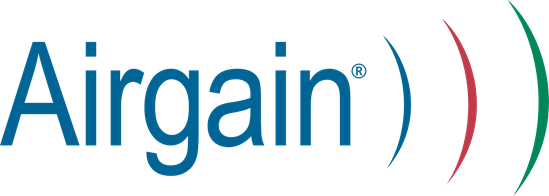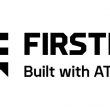Airgain targets launch of new HPUE antenna-modem platform for FirstNet by the end of year
Antenna manufacturer Airgain expects that its AirgainConnect antenna-modem—designed to enhance wireless signals in many frequencies, including the 700 MHz Band 14 spectrum licensed to the FirstNet Authority—will be commercially available during the fourth quarter of this year, company officials indicated last week.
AirgainConnect is an antenna-modem platform that delivers about 60% more power to a wireless signal than a typical vehicle-mounted antenna by eliminating 2 dB of typical cable loss, according to Airgain. The first announced AirgainConnect product is the AirgainConnect AC-HPUE, which includes an integrated Assured Wireless high-powered user equipment (HPUE) modem and is designed to effectively double the range of an LTE modem.
Airgain CEO Jacob Suen said he believes the AirgainConnect platform could be a “gamechanger” for the company, particularly in automotive markets.
“We announced the first AirgainConnect product, which targets public safety in fleet vehicles,” Suen said last week during Airgain’s second-quarter conference call, which was webcast. “We have begun field trials and have inquiries from potential customers being processed.
“Earlier this week, we announced that we have received AirgainConnect device certification on AT&T’s LTE network. You can now find our AirgainConnect product on the FirstNet website. We expect to see revenue begin to ramp in Q4 [the fourth quarter] of this year.”
Airgain officials declined to provide any details about the performance of the AirgainConnect platform, but Suen said “our field testing shows that our first product is performing to our expectation.”
Airgain CFO David Lyle said that Airgain typically has relied on the sale of consumer-oriented solutions to generate the bulk of the company’s overall revenue, but this could change next year as the AirgainConnect is available for adoption.
“Going into 2021, we expect our newly launched AirgainConnect platform’s first product to generate material and growing revenue for Airgain throughout 2021,” Lyle said during the conference call.
“We believe we are in a solid position to sustain through a challenging environment and are very excited about the prospects for growth in the second half of this year, but more importantly, in 2021—especially as it pertains to AirgainConnect.”
Airgain expects to see the “first … revenue dollars” from AirgainConnect during the fourth quarter of this year, according to Lyle.
“We still expect that to be the case,” Lyle said. “That implies that the AT&T network will be ready to go, just by virtue of the fact that we expect those revenues to come in at that point in time.
“We can’t talk specifically to AT&T’s plans there; they’ll have to articulate that. But we have confidence, based on our continued discussions with them and all of our channel partners, that that’s going to happen. Assuming that happens, we think we’ll start to see—starting in Q1–some pretty decent growth out of AirgainConnect and ramping through the entire year.”
Airgain officials did not identify a date when the AirgainConnect product would be commercially available, but Lyle said that officials for FirstNet, built by AT&T, “are more than willing to work with and want to put a really good focus on this product launch.”
AirgainConnect AC-HPUE integrates a FirstNet Ready Band 14 HPUE modem from Assured Wireless—an Airgain partner—within the antenna assembly, effectively eliminating the approximate 2 dB loss experienced as the signal is transmitted on a coaxial cable that connects an LTE router to a typical vehicle-mounted antenna. Only the Band 14 spectrum licensed to the FirstNet Authority is allowed to support HPUE devices that transmit signals at 1.25 watts, compared to the 0.20 watts of power used by typical commercial LTE devices.
For an isolated cell site, doubling the range of an LTE device effectively quadruples the total coverage area, given a consistent environment surrounding the cell site. Such a performance gain is expected to be particularly helpful in rural areas, where economic factors often limit the number of cell sites deployed. In addition, HPUE is designed to improve signal strength in challenging urban environments, such as underground parking garages.
Such performance has been anticipated by many in the public-safety community. If HPUE products can deliver the promised performance gains, the implications could be significant for FirstNet adoption by public-safety entities.
In past years, officials surrounding the FirstNet initiative have acknowledged that adoption likely would be greater if not for a perception that the LTE coverage for FirstNet—using AT&T’s radio access network, as well as the carrier’s commercial spectrum—is inferior to the coverage provided by Verizon.
But figures released earlier this year by both carriers and third-party sources indicate that Verizon’s LTE coverage advantage has narrowed to 70,000 square miles. If FirstNet subscribers are able to realize the performance gains from HPUE on the outskirts of AT&T’s network, that effective coverage gap presumably would narrow further, if not disappear entirely.
To date, AT&T has not responded to requests from IWCE’s Urgent Communications to quantify the nationwide coverage impact of HPUE in this manner.
















